For those with an interest in the Mexican women’s game, the 2024 Clausura tournament (the second half of the 2023/24 Liga MX Femenil season) is already providing plenty of entertainment, with surprise results, tactical masterclasses and end-to-end action making it a thoroughly engrossing spectacle.
One of the teams that has attracted a lot of attention is Monterrey Femenil (nicknamed Las Rayadas), with them the subject of plenty of speculation prior to the Clausura kicking off as to whether they would have enough to challenge following the departures of several key names and how quickly new head coach Amelia Valverde, who led her native Costa Rica at last year’s Women’s World Cup, would have the desired impact.
With four wins and one draw from their opening five matches, the early signs have been very positive in both regards, with Valverde introducing a more direct style of play during her short time at the helm and leading to them currently sitting second in the table and “best of the rest” behind leaders Tigres Femenil.
This tactical analysis will take a closer look at what has changed in Monterrey’s performances, providing a breakdown firstly of their critical tactics during the Apertura tournament last year, where they made it to the play-off semi-finals before being knocked out by eventual champions Tigres, and then how Valverde has tweaked or changed things around to streamline their performances. The analysis will also point out the impact that some of their new signings have made on their play and will show how they have aided Valverde in implementing her vision.
Attacking threat
When watching Monterrey Femenil during the Apertura tournament, what was constantly clear was that they were very good at moving the ball around the pitch and at constructing sequences of play but that they left a lot to be desired whenever they moved into the final third. Therefore, ensuring that her new team was as clinical as possible needed to be at the top of Valverde’s to-do list following her arrival in Mexico’s second-largest city.
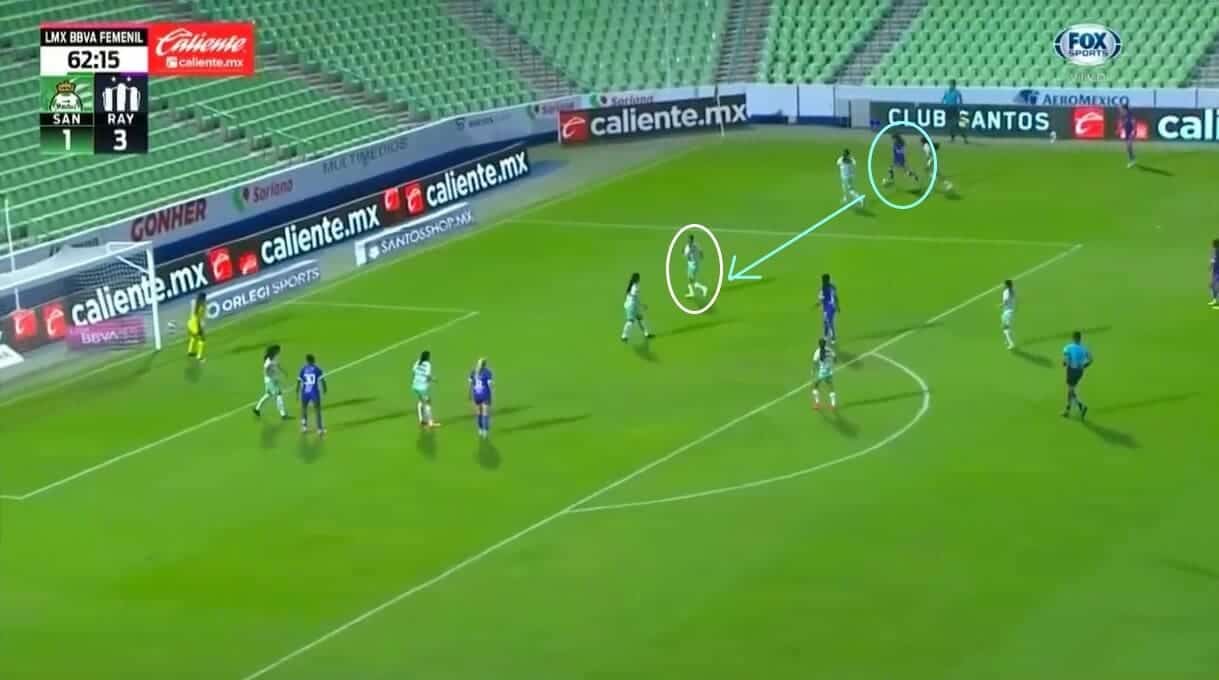
What tended to let them down more often than most was that they often saw their momentum ebb away as soon as they got into a promising position, with the result being that the final pass or cross rarely contained the same venom that the attack until then had been built on. In this case, that allowed Santos Laguna Femenil to easily bring the chance to an end, with midfielder Fátima Servín getting almost up to the goal line but then passing the ball into the goal area with little conviction and enabling defender Sheila Pulido to intercept it before it could reach one of her teammates.
Before being too critical, it is important to remember that Monterrey scored 41 times during the regular part of the Apertura tournament (an average of 2.4 times per game), so they deserve credit for that. However, with their total being 10 less than Tigres and leaving them 24 goals behind top scorers Club América Femenil, there is clearly still room for them to become even more productive, and that is what Valverde will have no doubt picked up on following her appointment.
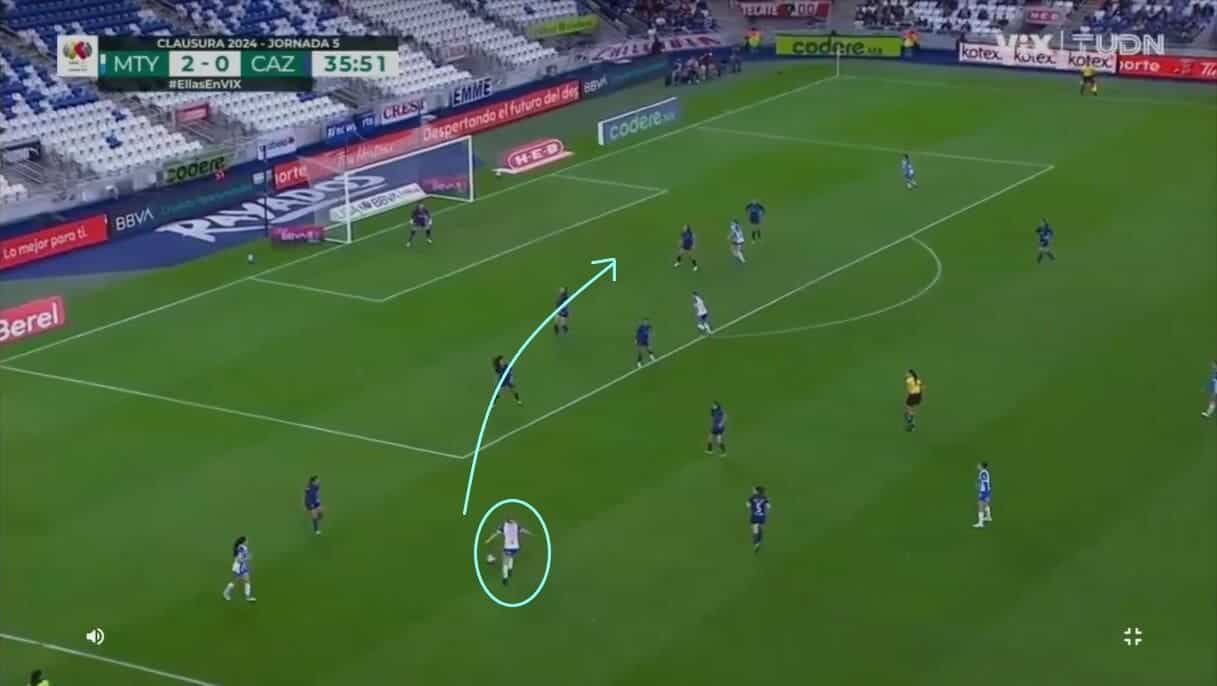
One of the ways that she has sought to remedy that slight profligacy in front of goal is by asking her players to make more crosses from further out, with them being tasked with showing more urgency around the field and looking to test their opponents earlier, just as Karol Bernal is doing here.
It might seem like a dull tactic to employ, given that it removes the idea of playing more intricate sequences as Monterrey may have done before, but it is actually a very clever tweak and one that could have a positive impact in the longer term. The theory behind it is that because they will be targeting the heart of opposing defensive lines before they have had the same amount of time to set their shape up, there is an increased possibility of a mistake being made and the ball either being loosely cleared or not being met at all.
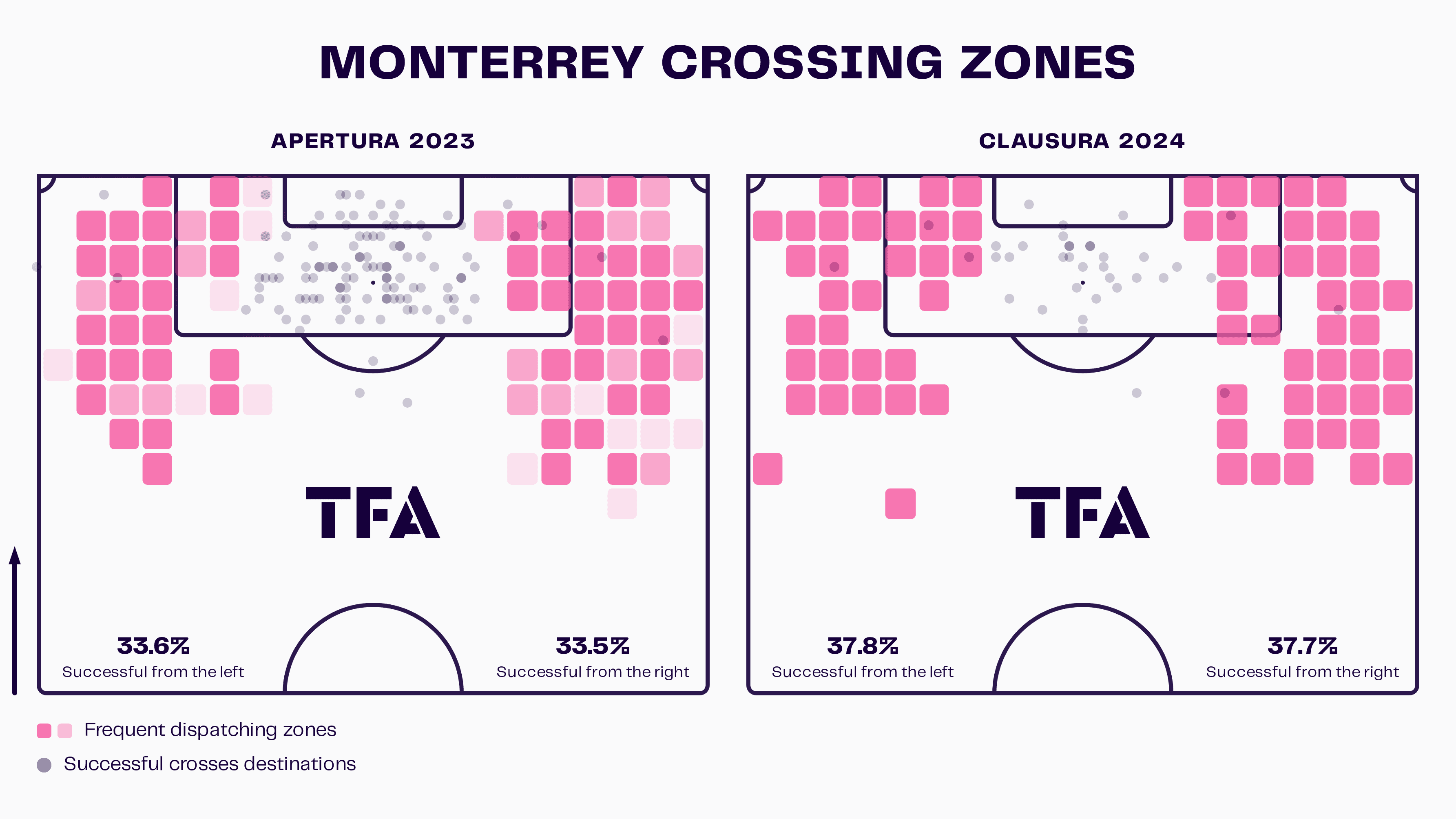
On that occasion, Cruz Azul Femenil did manage to win the first ball and to prevent Monterrey from getting a shot away at goal, but this graphic shows how the principle behind this new tactic is something that the team has bought into, with them delivering balls into the middle from further out on more occasions and their overall crossing accuracy increasing when compared to the same statistics for the Apertura campaign.
Therefore, when looking at why Monterrey have managed to start the Clausura tournament with an unbeaten record and look like Tigres’ closest title challengers, this has undoubtedly contributed and is something which Valverde deserves credit for as she looks to improve her team’s overall attacking threat.
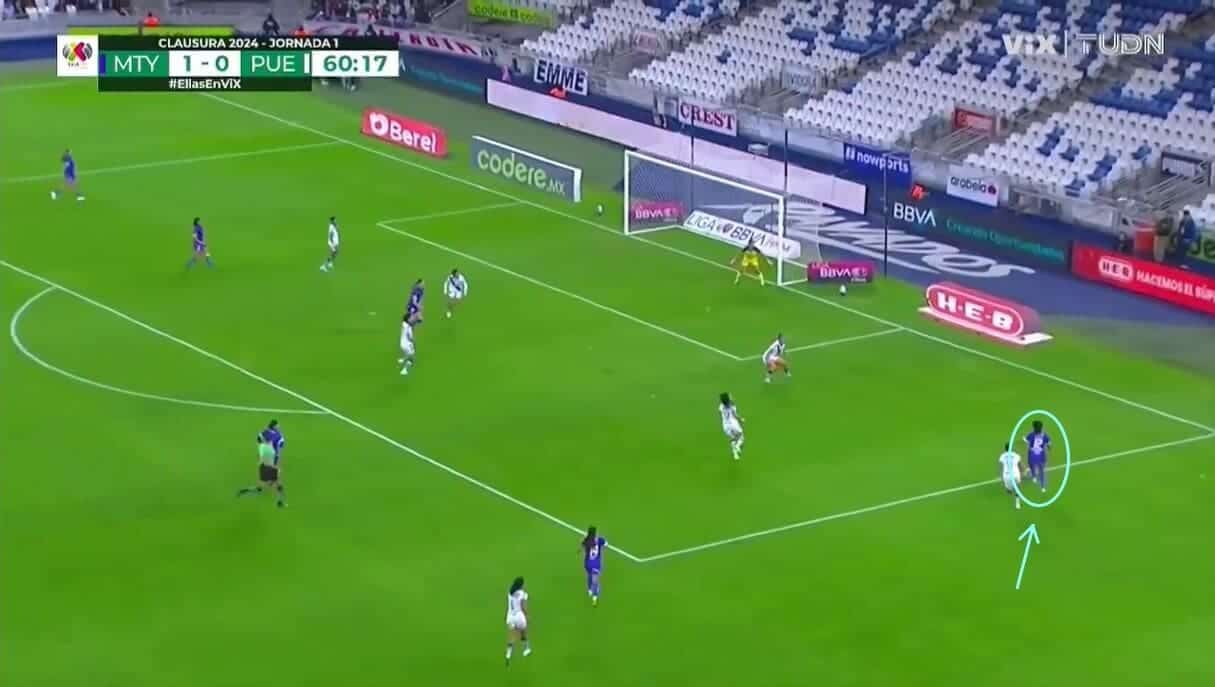
The other thing that Valverde has tried to develop is the roles that her team have around the field, with another of her changes seeing the job of making those crosses removed from the wide attackers and given instead to the full-backs, who have been given licence to push further up the pitch when the team is in possession.
As a result, those on the wings have been freed up to cut inside more and to better support offensive play, and one player who has really benefitted from this is South Africa forward Jermaine Seoposenwe. She did have some impact on their Apertura campaign last year but has really come into her own ever since Valverde took charge, with her now making plenty of inverted runs and showing confidence whenever the ball is at her feet and arguably becoming Monterrey’s key target player.
Her individual quality and threat is demonstrated clearly here, with her easily beating Puebla Femenil’s María Sainz in a 1-v-1 duel and making an inverted run to put Monterrey into a strong position. At that point, it is only about passing across goal and she will have succeeded in setting up a chance for one of her teammates to put the ball into the back of the net.
On this occasion, the chance doesn’t lead to anything, and Puebla manage to clear the danger behind through Ivonne Najar, but that does not detract from the quality that was shown by Seoposenwe in fashioning the opportunity, and both she and Guatemala winger Ana Lucía Martínez (the latter of whom joined from Serie A Femminile side Pomigliano Femminile in the close season) will be key players in the final third for Monterrey as the season goes on.
Transitions
Where there have been the most noticeable changes to Monterrey Femenil’s play is in their transitions because they tended to be more free-flowing and tried to play through their opponents under former manager Eva Espejo (who moved into a Director of Football role after the Apertura tournament had concluded), but have, as mentioned, looked to be more direct with Valverde at the helm.

Unlike their attacking play, though, this change has not come because of any issues in the way that they built chances because what was always evident in their matches before the mid-season break was that the whole squad had an understanding of where each other would be and where to move the ball to.
With triangles like this forming as players continuously connected with each other, their performances were reminiscent at times of traditional Spanish tiki-taka play, with plenty of one-touch passes making them very easy on the eye. It is not hard to see why they have so far recorded a 79.1% passing accuracy for the season as a whole and have averaged 58.87% possession per match, with so many opponents finding it very difficult to win the ball from them.
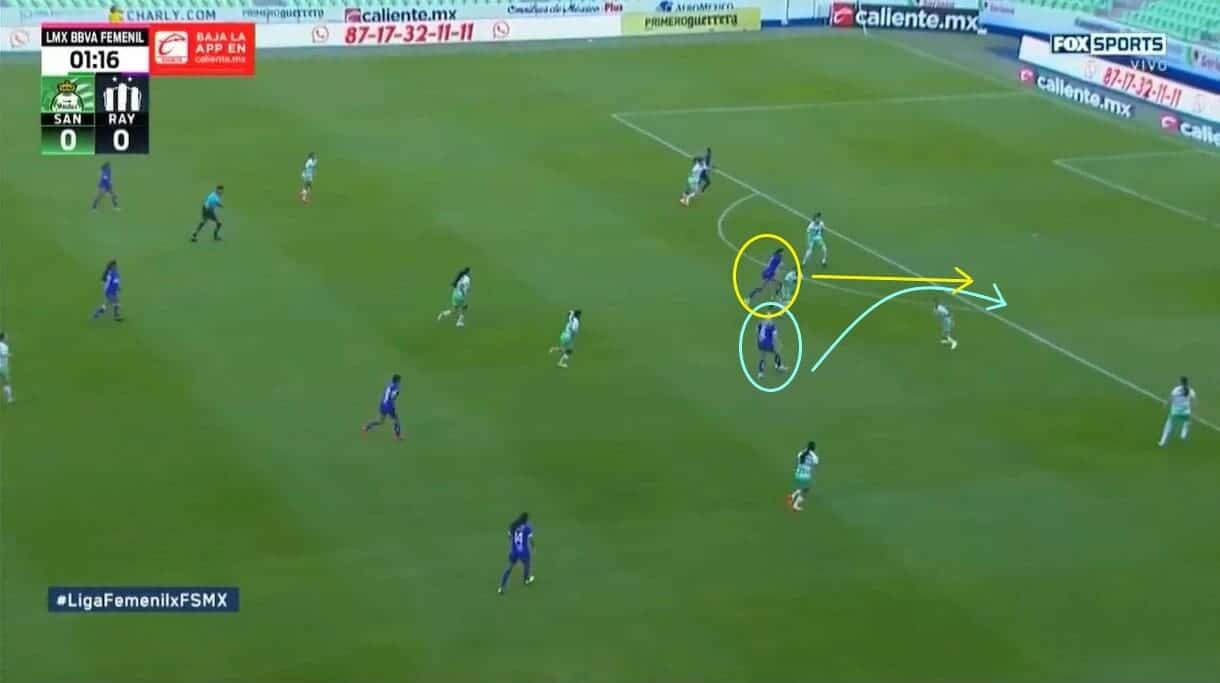
Central to their success in this was American midfielder Carlee Giammona, who often played in either an attacking midfield role or amongst the forward line for them whenever she was on the field. Her ability to be spatially aware and to know where her teammates were at all times meant that she was the one that the rest of the team was built around more often than not, and her ability to score as well as to create meant that she was always someone that opposing sides had to be aware of.
Her importance to Monterrey’s play is demonstrated clearly here, with her receiving the ball from Christina Burkenroad and instantly recognising the possibility of playing it back into the striker’s path through the gap that Santos Laguna have left open ahead of her. There was still a lot of work for her to do to create the chance for her teammate, but this rarely phased her and the fact that her chipped pass led to Burkenroad testing goalkeeper Hannia De Ávila shows how vital she was whenever Monterrey were moving the ball around the pitch.
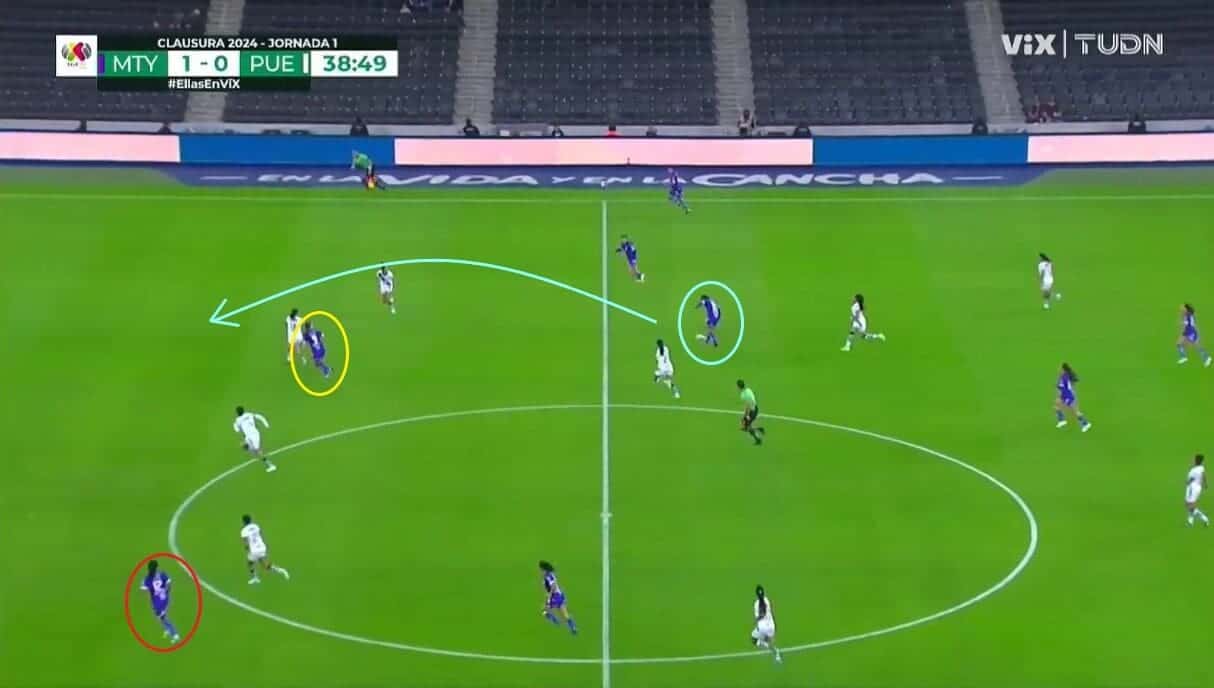
Her decision to leave the club during the break left many wondering how the team would replace her influence around the field, with the expectation being that they would perhaps sign a new playmaker as a direct replacement. However, Valverde saw it as an opportunity to introduce a different approach to the way that her team act in transition, with her asking them to make a few more aerial passes as they once again try to catch their opponents out and take advantage of the territory that they leave open behind them.
The fact that this was the main way that Monterrey would build attacks under the former Costa Rica head coach was clear to see from their first game under her, which was the home meeting with Puebla, and there were plenty of situations when it did lead to the desired result. This situation was one of them, with Nicole Pérez spotting Puebla’s high back line and the run of Myra Delgadillo ahead of it and sending the ball over the top for her to get on the end of.
Even though Seoposenwe, who ran up the field at the same time, was unable to score here due to Najar getting in her eyeline at the last minute, the danger that Monterrey posed was clear to see, and it provided a clear demonstration of what their transitions under Valverde would largely resemble going into the rest of the campaign.
Defensive play
It has not only been in attack, though, that Monterrey Femenil have been making adjustments under their new manager, with their defensive play also being updated as they try to give themselves the best possible chance of challenging for silverware during the Clausura campaign.
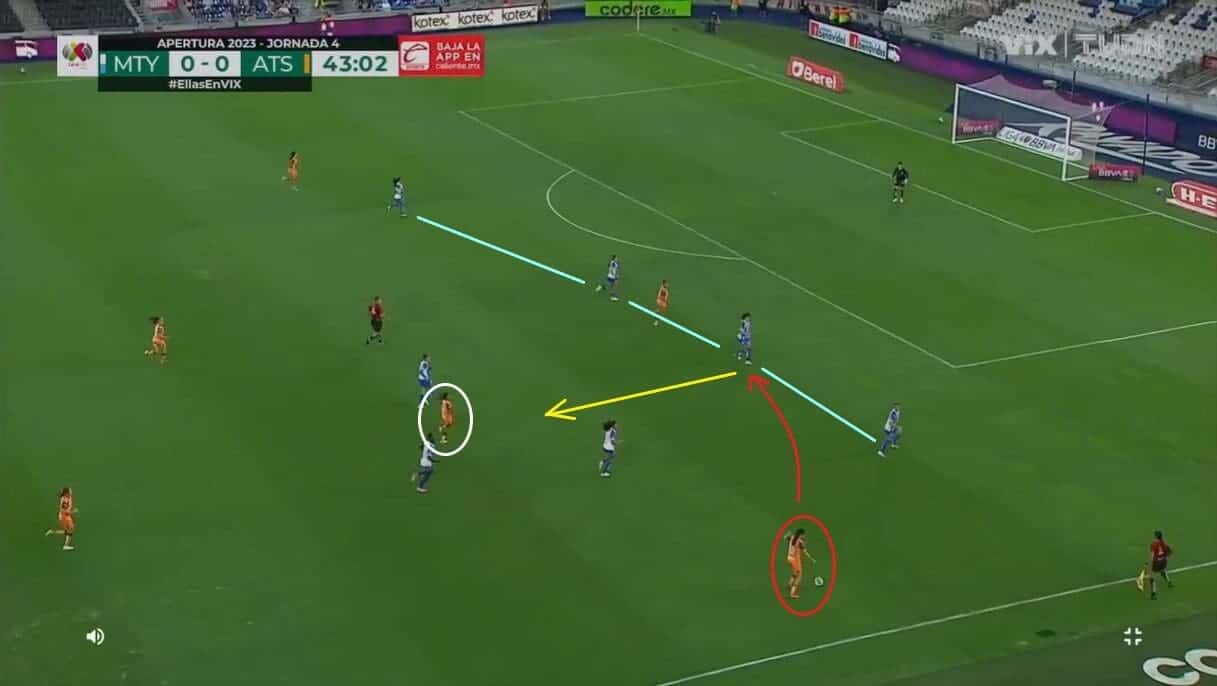
Like their goal tally at the other end of the pitch, their defensive work looks on paper to have been very commendable, with them conceding just 13 times during the regular part of the Apertura campaign, which was the second-lowest number in the tournament.
That statistic masks the reality of a lot of their performances, though, with them often getting lucky with moments when they invited pressure from their opponents and allowed them to test their defensive resolve, mainly because of their inability to find the right balance in their back line as they experimented with being compact and spreading out to cover as much of the pitch as possible.
However, even when they had managed to set up in a way that made them, in theory, more robust, they were then let down by individual errors whenever teams tried to find their weak points. In this case, it appears that Atlas Femenil will not be able to find a way through them, but Maritza Maldonado tries to anyway, and the fact that her cross is unconvincingly cleared by now-América defender Mariana Cadena into the path of El Salvador forward Brenda Cerén shows how unsteady Monterrey were at times whenever they didn’t have the ball.
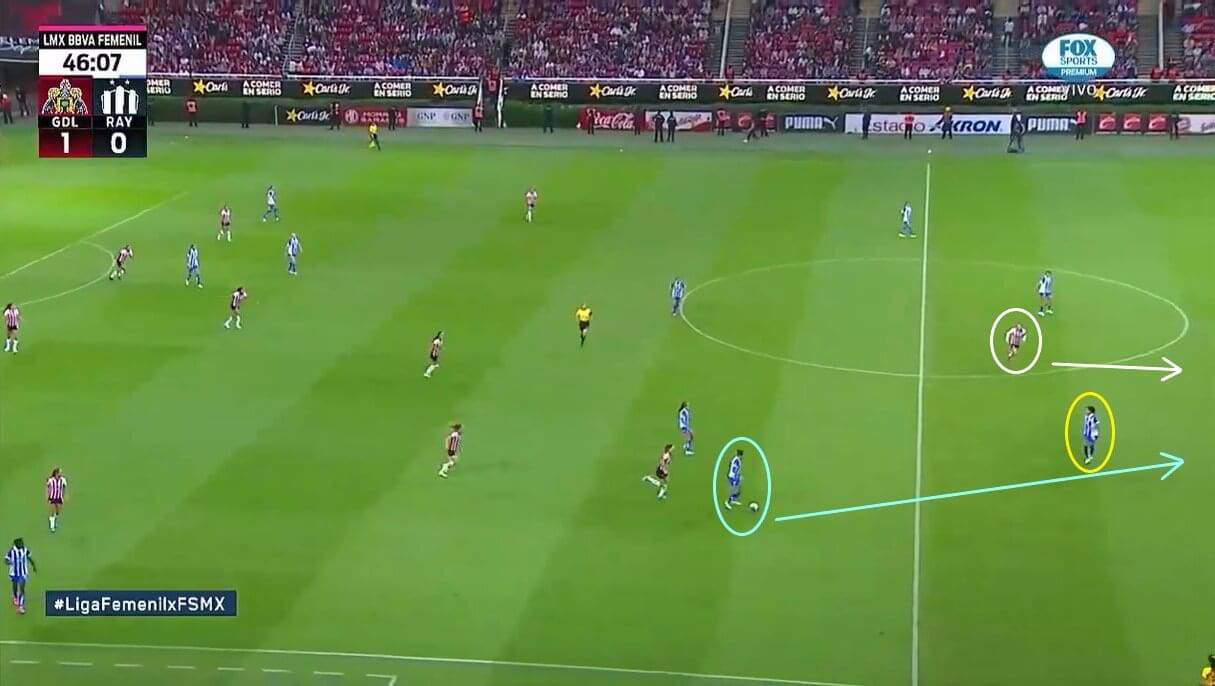
The other thing that will have concerned fans and the coaching staff alike is Monterrey’s propensity for playing themselves into trouble unnecessarily, as has happened here against Guadalajara Femenil. In this case, the defensive line has positioned itself quite far up the field and is moving the ball around as they try to find a way through, but one moment of poor quality occurs as the pass from Yamile Franco to Cadena here is overhit and Monterrey are instantly wide open and have their goal at the mercy of Alicia Cervantes, who is widely considered to be one of the most potent strikers in the Mexican women’s game.
On this occasion, Monterrey are let off by determined goalkeeping from former Celtic Women player Pamela Tajonar, who manages to save Cervantes’ effort before Cadena gets back to send the ball behind and to safety, but this shows how Monterrey can at times lose focus and put themselves in unnecessary peril. Therefore, despite having one of the best defensive records in the Apertura, Monterrey was far from a secure team last season, and this needed to be improved.
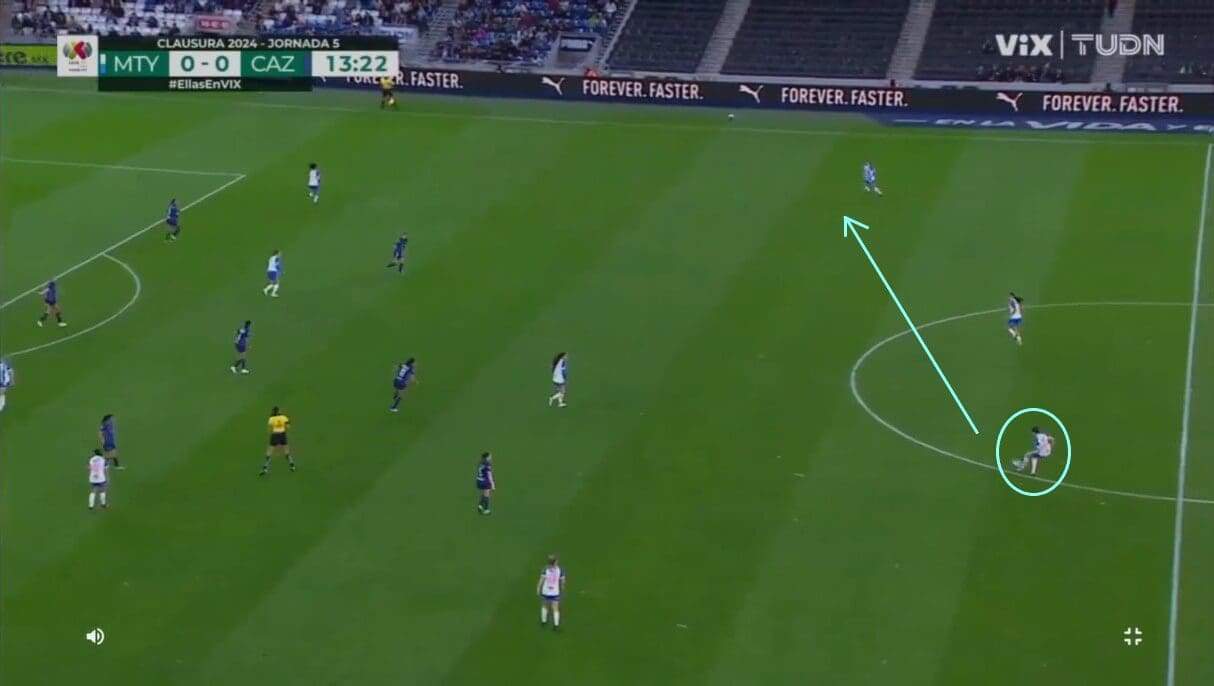
To their credit, it is something that they have looked to remedy, with one of Valverde’s key signings being the addition of experienced Netherlands defender Merel van Dongen on loan from Atlético Madrid Femenino. Capable of playing as either a centre-back or as a left-back, she has quickly settled into her new surroundings and has helped to shore things up at the back as well as to add another ball-playing quality to Monterrey’s ranks, with this pass towards the far side of the field a clear indication of her ability to find space and to play the expansive style that Valverde wants to bring in.
This is not to say that things have been perfect so far, with Monterrey conceding two goals against Pachuca Femenil by allowing star striker Charlyn Corral to break them down far too easily, so they are still a work in progress. However, the fact that those are so far the only goals that they have let in and that they have won 67.4% of their defensive duels so far does prove that, yet again, Valverde is making positive changes, and her ideas are having the desired impact.
Conclusion
In conclusion, this tactical analysis has looked in detail at Monterrey Femenil and their start to the 2024 Clausura tournament, breaking down both their tactics during last year’s Apertura campaign and how new manager Amelia Valverde has looked to develop and improve various aspects of their play during her short time at the club.
As the scout report has shown, there is plenty to like about what Monterrey are doing under the Costa Rican coach so far, and it is clear that the players are responding to her methods and that marriage is shown by the fact that they are unbeaten after the first five outings of the campaign. However, there is still a long way to go and the beauty of Liga MX is that anything can happen, so Monterrey will need to keep their feet firmly on the accelerator and to avoid complacency entering their mindset if they are to end the season positively.
It should be mentioned that they have yet to play some of the bigger teams in the league (Pachuca aside), and so there will be tougher matches ahead than the ones that they have had so far. However, given the start that they have made, it is currently difficult to see them slipping up too much and they could well be a side that Tigres harbour a few concerns about with regards to their own title hopes.





Comments